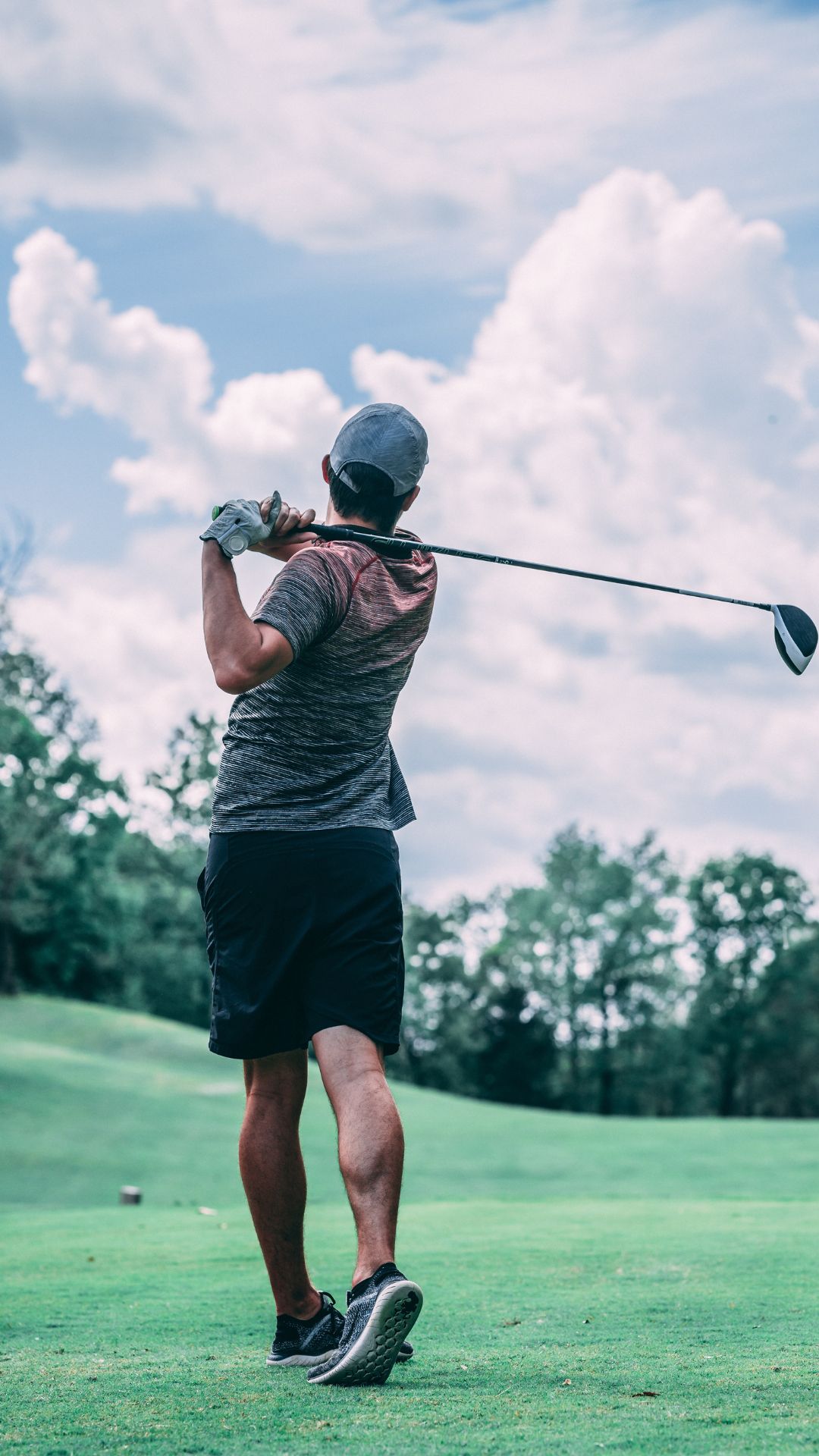It’s a beautiful day. You’re on the course with friends and that tight lower back that was nagging you a little on your first nine is now screaming at you during your second round.
No one likes dealing with pain or injuries out on the golf course. Golf is about getting outside with some friends, enjoying some fun competition, and being able to escape the rest of the world and all its stressors for a few hours. Nothing puts a damper on such a noble pursuit faster than an injury. The good news is that the most common golf injuries can be prevented from happening or remedied with some simple extracurricular work and golf physical therapy that won’t tax your schedule or your wallet.
How Serious Is Your Injury?
Golf injuries tend to be chronic injuries as opposed to acute injuries — like that lower back twinge that you feel on your takeaway or follow-through.
The most common golf injuries happen when you combine a lifestyle that may be too sedentary with a dynamic movement — like swinging a golf club — that asks a lot of the human body. The result can be knee issues, hip and lower back issues, shoulder issues, or elbow and wrist issues. The guys on TV make the golf swing look so easy, but in reality it’s one of the most complex movements in all of sports. There’s motion at just about every joint in the body and that motion has to occur in a proper sequence while you’re swinging a club about 100 miles per hour.
Why Are You in Pain?
Generally, lower body injuries happen when you don’t use the lower body enough in the golf swing. We see a lot of knee, hip, and lower back issues in players who have a very arms-y swing. The optimal golf swing involves both the lower and upper body. When you try to play using just the upper body you will lack power and the knees, hips, and lower back are forced to deal with a lot of rotational force and torque that will eventually lead to pain and injury.
A lot of the upper body injuries that golfers deal with come from over-use. Muscles in the core, back, shoulders, and arms aren’t strong enough to handle the rigors of swinging the club as many times as you do when you play a round of golf or go out and hit a bucket of balls. Weakness in the upper body — a lot of it caused by our more sedentary lives and hours spent with our chins in our chests looking at our phones — can very easily lead to repetitive use issues and injuries.
An Ounce of Prevention
Of course, the best way to deal with injuries on the course is to prevent them from happening in the first place. Why go through a bunch of sessions with a physical therapist working on rehabilitating an injury when you can avoid that injury altogether by prehabilitating your body?
Prehabilitation looks at the common causes of injuries and treats those causes before they can do much damage. Once you understand your own physical limitations, it’s very easy to adjust your golf fitness conditioning program to specifically address those issues.
When Injuries Do Occur
Sometimes, though, despite of all your preparation, injuries do occur. Unfortunately, things happen when you’re swinging a driver or wedge anywhere from 60 to 100 times over the course of your round. And the odds against you are upped if you spend most of your time away from the course sitting at a desk hunched over a keyboard.
But it’s not just adult and senior players that can be bitten by the injury bug. Junior players are just as vulnerable as anyone else, but with some big differences.
Issues affecting older players tend to be mobility issues; body parts are too tight and don’t have the required range-of-motion for an optimal swing. Junior golfers tend to suffer from weakness issues. Overuse injuries can happen if the muscles in the hips, core, and shoulders haven’t yet developed the muscular endurance to maintain proper form throughout the swing. This lack of strength and stability — especially in players who are still growing — can increase the body’s susceptibility to injury.
A round of golf should be a fun and pleasurable experience. If pain or injury is keeping you from enjoying your time out on the course, let Pain & Movement Solutions help you get back in the game, stay healthy, feel great, and shoot lower scores.

